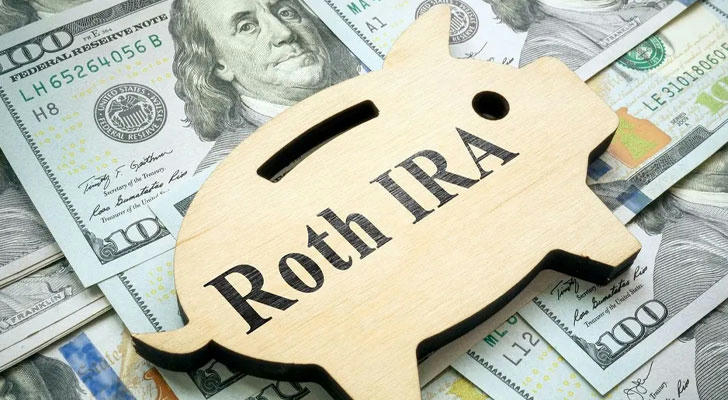401(k), IRA, Roth? Retirement Accounts Are More Complex Than American TV Series? Understand Them in One Article!
Below is an English version of the fully updated guide on retirement accounts, now enriched with opposing viewpoints and critical analysis. The tone remains clear and reader-friendly. Long-form narrative (around 4,000 words) has been preserved in structure—case studies, tools, risks, and reflection questions—while ensuring clarity and completeness. You’ll find this version suitable for publication or detailed guidance.

💼 Complete Retirement Accounts Guide: Balanced Strategies and Critical Insights
Retirement planning isn’t just about choosing accounts—it’s about building a resilient and flexible system. This guide covers major tools, real-life scenarios, risks, and critical thinking to support long-term financial confidence.
1. Key Retirement Accounts Overview
Use these tools in combination—401(k), Traditional IRA, Roth IRA, business-specific plans, and HSAs—to build a robust savings strategy across different life stages.
1️⃣ Traditional 401(k)
- Contributions are deducted pre-tax, reducing current taxable income
- 2024 limit: $23,000 annually (with $30,500 for ages 50+)
- Employer match often reaches 50% of contributions (e.g., contribute 6%, employer matches 3%)
Strengths: immediate tax relief, company contributions Considerations:
- Withdrawals before age 59½ incur 10% penalty plus tax
- Investments tied to market performance—subject to downturns
- Future tax laws may affect long-term benefit
2️⃣ Roth 401(k)
- Contributions are made after tax
- Withdrawals in retirement (both principal and gains) are tax-free
- Best fit: younger earners expecting higher tax rates later Drawbacks:
- If retirement tax rates fall, benefits diminish
- Future policy changes could alter Roth advantages
3️⃣ Traditional IRA
- Often offers tax deductions at contribution
- 2024 limit: $7,000 annually (up to $8,000 for ages 50+) Attention areas:
- Eligibility for deductibility depends on income
- Fees and investment quality vary—expense monitoring needed
4️⃣ Roth IRA
- Tax-free qualified withdrawals at retirement
- Income limits apply (phase-out above $146,000 for singles)
- Principal can be withdrawn penalty-free for emergencies Limitations:
- Contributions for high earners may be restricted
- Early withdrawal of gains incurs penalties
5️⃣ Solo 401(k) & SEP IRA
Designed for self-employed individuals:
- Solo 401(k): annual limit up to $69,000 (employer + employee portion)
- SEP IRA: flexible, easier admin Trade-offs:
- Requires tax knowledge, bookkeeping
- Administrative burden higher than normal IRAs
6️⃣ HSA (Health Savings Account)
Offers triple tax benefits: deductible contributions, tax-free growth, and tax-free qualified withdrawals Weaknesses:
- Must pair with high-deductible health plan
- Non-qualified withdrawals incur penalties
2. Real-Life Case Studies
Case 1: 28-Year-Old Engineer
- Annual salary: $95,000
- Company offers 401(k) match Recommended approach:
- Max employer match in 401(k)
- Fund Roth IRA (due to lower current tax rate)
- Additional 401(k) contributions as cash allows
- Consider Roth conversion when tax bracket remains favorable Critical reflection:
- Employer match may be reduced in a downturn
- Roth IRA’s flexibility—only principal is liquid; earnings require waiting period
Case 2: 45-Year-Old Business Owner
- Income swings between $40K and $120K Suggested plan:
- High-income years: utilize Traditional IRA + Solo 401(k)
- Lower-income years: contribute to Roth IRA to lock in tax rates Caveats:
- Solo plan setup demands accurate tax understanding
- Consulting fees might diminish gains
Case 3: 60-Year-Old Pre-Retiree
- Salary: $80,000; holds Traditional IRA and 401(k) Strategy:
- Max out catch-up contributions ($7,500/year)
- Moderate Roth conversions to smooth tax
- Use Qualified Charitable Distributions (QCDs) to alleviate tax burden Risks:
- Market timing risks when converting during downturns
- QCDs work only with planned charitable contributions

Case 4: Freelancer with Unsteady Income
- Earns inconsistently Strategy:
- During high-earning periods: contribute to SEP IRA or Solo 401(k)
- During lean periods: fund Roth IRA for flexibility
- Pair with HSA for medical cost benefits Risks:
- Conversion timing during downturn can cause unnecessary taxes
- Emergency fund is essential to avoid early withdrawals
Case 5: Early Retirement Couple
- Combined income: $180,000; aim to retire at 55 Plan:
- Max employer-matched 401(k)s
- Max Roth IRAs for each person
- Annual HSAs for medical savings
- Small, yearly Roth conversions to manage tax brackets Caution:
- Too much conversion can push into higher tax rates
- Always maintain liquid reserves to counteract market drops
3. Risks & Critical Analysis
Liquidity Issues
These accounts lock money away—premature withdrawal can lead to penalties and lost growth. Maintain 3–6 months of living expenses in cash reserves.
Market Risk
Asset value fluctuates. Avoid large Roth conversions during bear markets. Instead, convert steadily or during market recoveries.
Tax Law Risk
Future rules may alter tax benefits—especially for Roth accounts. Plan for flexibility and frequent policy monitoring.
Account & Fee Transparency
High-fee investments erode returns. Compare low-cost institutional index funds versus expensive retail products within these accounts.
4. Questions for Critical Reflection
To refine your retirement strategy, consider the following:
- What if tax rates decline in retirement—should your strategy pivot?
- What if Roth tax exemptions are reduced in future legislation?
- How much cash needs to remain flexible versus locked away?
- Is borrowing from a 401(k) a smart move or a hidden debt risk?
5. Consolidated Age-Based Strategies
| Age Range | Strategy |
|---|---|
| 20–30 | Prioritize Roth accounts—low tax, long growth horizon (e.g., $6k/year → ~$1.28M at 7% return) |
| 40–50 | Combine Traditional and Roth, aim for 15–20% savings rate |
| 60+ | Max out catch-up contributions, use Roth conversions with tax awareness, explore QCDs |
6. Simplified Action Plan
- Secure full employer match in 401(k)
- Max Roth IRA next
- Return to 401(k) once Roth is filled
- If 50+, exceed limits via catch-up contribution
- Maintain emergency fund outside retirement accounts
- Review plan annually, adapt to income and policy changes
Final Takeaway
Retirement planning is not set-it-and-forget-it. It requires thoughtful account selection, portfolio diversification, risk awareness, and adaptive strategy. By combining multiple account types—pre-tax, post-tax, self-employed plans, and HSAs—along with regular review and emergency reserves, retirement-saving becomes strategic, tax-savvy, and resilient.
